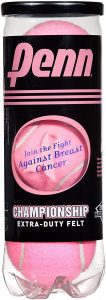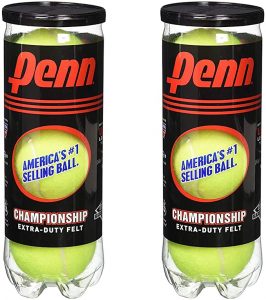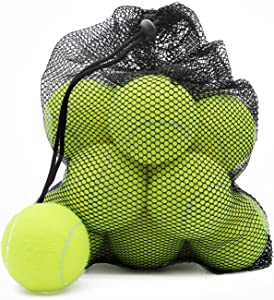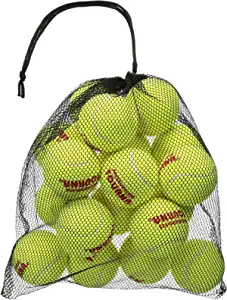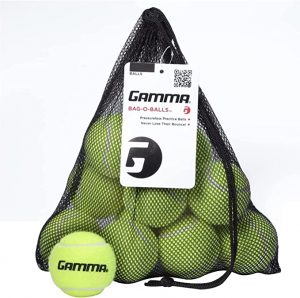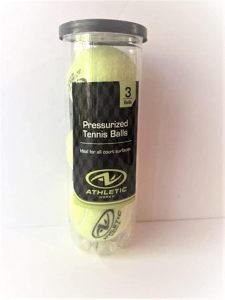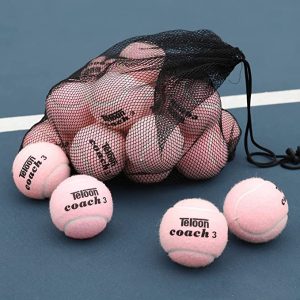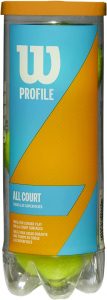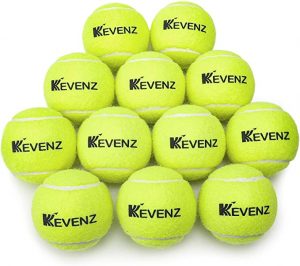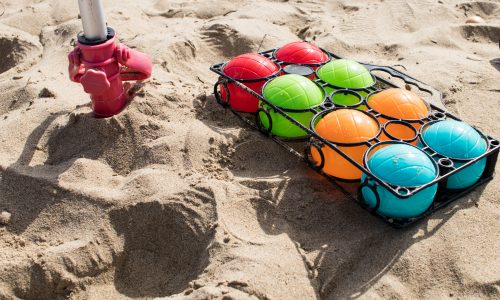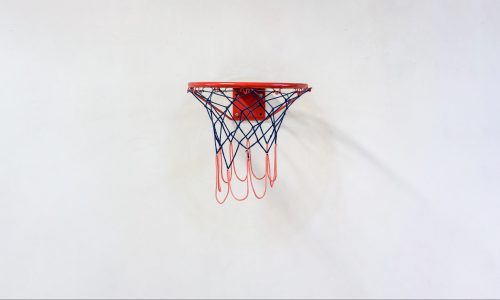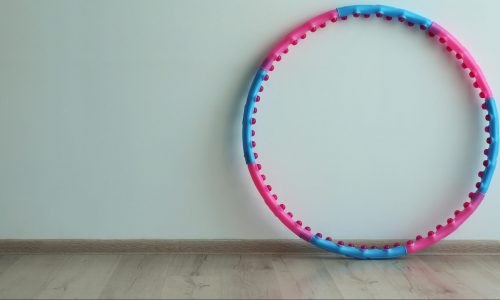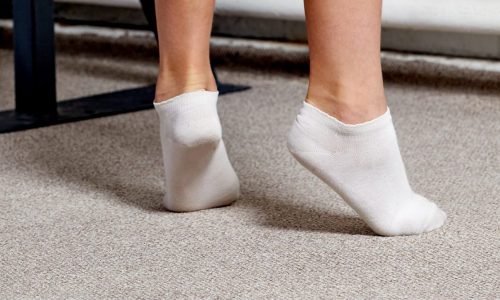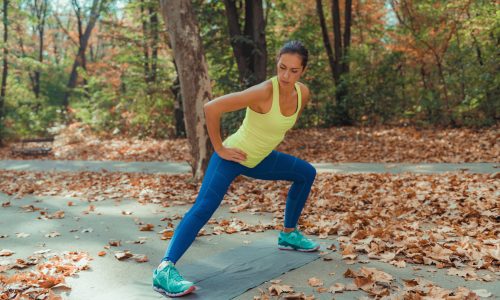The Best Tennis Balls

Our Review Process
Don't Waste Your Money is focused on helping you make the best purchasing decision. Our team of experts spends hundreds of hours analyzing, testing, and researching products so you don't have to. Learn more.
Our Picks For The Top Tennis Balls
- 1. Penn Championship All-Court Natural Rubber Girls’ Tennis Balls, 3-Count
- 2. Penn Championship Pressurized Extra-Duty Felt Tennis Balls, 6-Pack
- 3. Magicorange Advanced-Training Tennis Balls, 12-Pack
- 4. Tourna Pressureless Tennis Balls, 18-Pack
- 5. Gamma Pressureless Tennis Balls, 12-Pack
- 6. Athletic Works Pressurized Tennis Balls, 3-Pack
- 7. Teloon Coach 3 Training Tennis Balls, 18-Pack
- 8. WILSON Prime All-Court Tennis Balls, 3-Pack
- 9. KEVENZ Standard-Pressure Training Tennis Balls, 12-Pack
These professional-style tennis balls made from extra-duty felt come from Penn, which has been testing and perfecting their products for 100 years. The pink rubber balls offer a controlled fiber release, consistent feel and reduced shock.
Well TestedThese natural rubber tennis balls in pink come from a trusted brand.
You’ll get two cans in this set, each containing three balls for a total of six. These are made with extra-duty felt, making them ideal for use on concrete or asphalt tennis courts. It’s made with natural rubber to help absorb shock and offer a consistent feel throughout your game.
Extra DurableThis pack of two cans gives you an extra-durable exterior on each ball for long-lasting wear.
Measuring 2.5 inches in diameter, this tennis ball features a bounce height of around 50 inches and a durable build. You’ll get 12 tennis balls in each set, shipped with a reusable mesh bag that has a drawstring lock closure. You can choose from a range of colors if you don’t want to stick with the standard optic yellow color.
Colorful OptionsShow off your personal style with this tennis ball option, which lets you choose between standard green, purple, blue and more.
These pressure-free balls are great for newer players, with a slower speed that helps you while you’re learning the game. You’ll get 18 balls in a mesh carrying bag that features a drawstring closure. The pressureless build means you’ll get consistent bounce over the years you use them.
Super ConvenientYou’ll always be well-stocked with this set of 18 tennis balls that come in a mesh carrying bag.
Buying Guide
Tennis balls might seem fairly straightforward, but they can vary widely from one to another. You’ll first need to consider whether you’re playing on hard tennis courts, your level of experience and the altitude where you’ll be playing. The wrong balls can not only influence your game, but they can wear out more quickly, forcing you to replace them every few uses.
If you’re entering competitions, you’ll need to look at regulations specific to those competitions. This can help you ensure you’re practicing with a ball that fits the dimensions and weight set out by your upcoming game. Otherwise, you might find your game is off when it matters most.
The International Tennis Federation sets out specific guidelines for the balls used in its competition. Each ball is carefully tested before put in use. Balls must weigh between 0.882 and 1.817 ounces, with a rebound between 33 and 53 inches, varying by competition stage. Look at the type of competition you’ll be playing and track down a ball that meets standards.
But even if you don’t plan to compete, you’ll want a ball that suits your level of experience. The most common ball types are pressurized, which gives them a higher bounce. If you’re new to the game or buying for youth players just starting out, track down a pressureless ball, which has less of a bounce. This makes it slower and easier to chase around the court.
The surface on which you’ll be playing is also a factor. There are three types of tennis courts: grass, clay and hard. If you’re playing on grass, artificial or real, or clay, you can go for any type of tennis ball. However, hard tennis courts, made of asphalt or concrete, call for extra-duty tennis balls. While regular tennis balls feature mostly wool with a little nylon thrown in, extra-duty tennis balls feature a mostly nylon covering with a little wool tossed in. Keep in mind that extra-duty tennis balls move slower than other types, so more experienced players will only want to use those when playing on a hard court.
What to Look For
- Tennis balls are sold in a variety of set sizes. You’ll get some sets that include only a few balls and others that provide eight balls or more. If you’re just starting out, you might want to start small and determine the type of tennis ball you prefer before investing in a larger set.
- You’ll need a way to get your tennis equipment from your home to the court. If your tennis balls don’t come with a carrying bag, you may want to purchase one. In most cases, though, you can slide them into your gym bag.
- Pay attention to the materials used to make the ball you choose. Quality rubber and felt can make a big difference in a tennis ball’s efficiency and durability.
- If you’re preparing for a competition or even an important game with a partner who’s extra-competitive, consider practicing with softer balls until you reach the final practices before competition. This will help you prepare without injuring yourself. For extra practice, check The Best Tennis Ball Machines To Perfect Your Backhand.
- Those who only occasionally play might want to go with a more durable option to reduce the chances you’ll have to go shopping for new tennis balls. However, you might find that you can focus less on durability when you play infrequently. This will let you choose the ball that best complements your play style.
- Altitude can impact your gameplay. If you live in a higher-altitude area, look for pressureless balls that can slow the ball down a little.
- The materials in tennis balls can absorb moisture, which means if you live in a humid area or you regularly play in humid weather conditions, look for lighter-weight balls to compensate for the extra weight.
More to Explore
Rackets are an essential part of the sport of tennis today, but the sport actually dates back before rackets were invented. French monks created the game that would later be known as tennis, but they used their hands to hit the ball across an object similar to a net. To protect their hands, players wore leather gloves. Eventually, the monks suffered enough injuries that they decided to use solid wood paddles.
MORE: The Best Tennis Rackets
Although rackets weren’t first manufactured until the mid-1800s, players began using something similar in the 14th century. This racket featured gut strings attached to a wooden frame. The frame made a teardrop shape and had a handle similar to what would later become a tennis standard.

